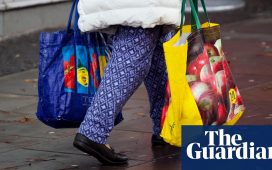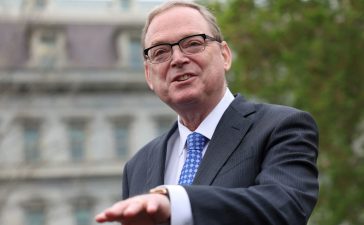Unlock the Editor’s Digest for free
Roula Khalaf, Editor of the FT, selects her favourite stories in this weekly newsletter.
John Lewis hailed the effects of its turnaround efforts as the operator of department stores and Waitrose supermarkets reported a narrowing of losses and a slight increase in half-year sales.
The employee-owned company said losses before tax had fallen to £30mn in the six months to July 27, from £59mn a year earlier, while revenues were up 2 per cent to £5.2bn, in the last set of results under departing chair Dame Sharon White.
Chief executive Nish Kankiwala said the update confirmed that “our transformation plan is working” and that the company expected “a significant uplift in profits for this full year”.
In March the group reported pre-tax profit of £56mn for the year to January, compared with a £234mn loss in the previous 12-month period.
It has been seeking to turn its fortunes around and modernise its shops after three years of losses and no staff bonuses.
Kankiwala, who became the partnership’s first-ever chief executive around 18 months ago, said customers believed “the buzz was back” at the retailer. He acknowledged “there was much more to do” to restore it to its former glory but said there was “tremendous potential” across both businesses.
He added White, who was not on the call with reporters and did not give a statement as part of her last set of results, “remained exceptionally supportive” of the turnaround plan and its performance.
Revenues at Waitrose rose to £3.7bn in the six-month period, from £3.5bn the year before, while at John Lewis they were flat at £1.5bn.
Total sales, its preferred metric, increased 5 per cent at Waitrose to £3.9bn, and fell 3 per cent to £2bn at John Lewis department stores.
The supermarket chain, which has plans to open 100 new stores, “delivered strong profit growth” in the first half, posting an adjusted operating profit of £113mn, the company said. Performance at the department store business remained more challenging as it reported a £49mn loss, partly because of poor fashion sales and lower demand for “big ticket” items such as furniture.
Group adjusted operating margin was 0.9 per cent, an improvement on a 0.3 per cent decline in the same period last year.
Clive Black, head of consumer research at Shore Capital, said it was “pleasing to see this British retail institution out of the surgical ward and almost exiting the medical one, too”. The business was “more focused”, he added, and “the balance sheet was not distressed”.
The group said it managed to make further savings of £78mn from simplifying the business, delivering £500mn in savings since January 2021 as part of a target of £900mn by 2026.
On Monday it welcomes new chair and Tesco veteran Jason Tarry, who is succeeding White after five years in charge. She has had to contend with a pandemic and a period of high inflation while trying to improve trading amid fierce competition from rivals and criticism that she lacked the retail skills to turn the business around.
The results come after John Lewis last week announced it would bring back its 100-year-old “never knowingly undersold” price promise two years after it was ditched by management.
The retailer previously also watered down targets to derive almost half of its earnings from outside retail by 2030 — a plank of White’s strategy.









